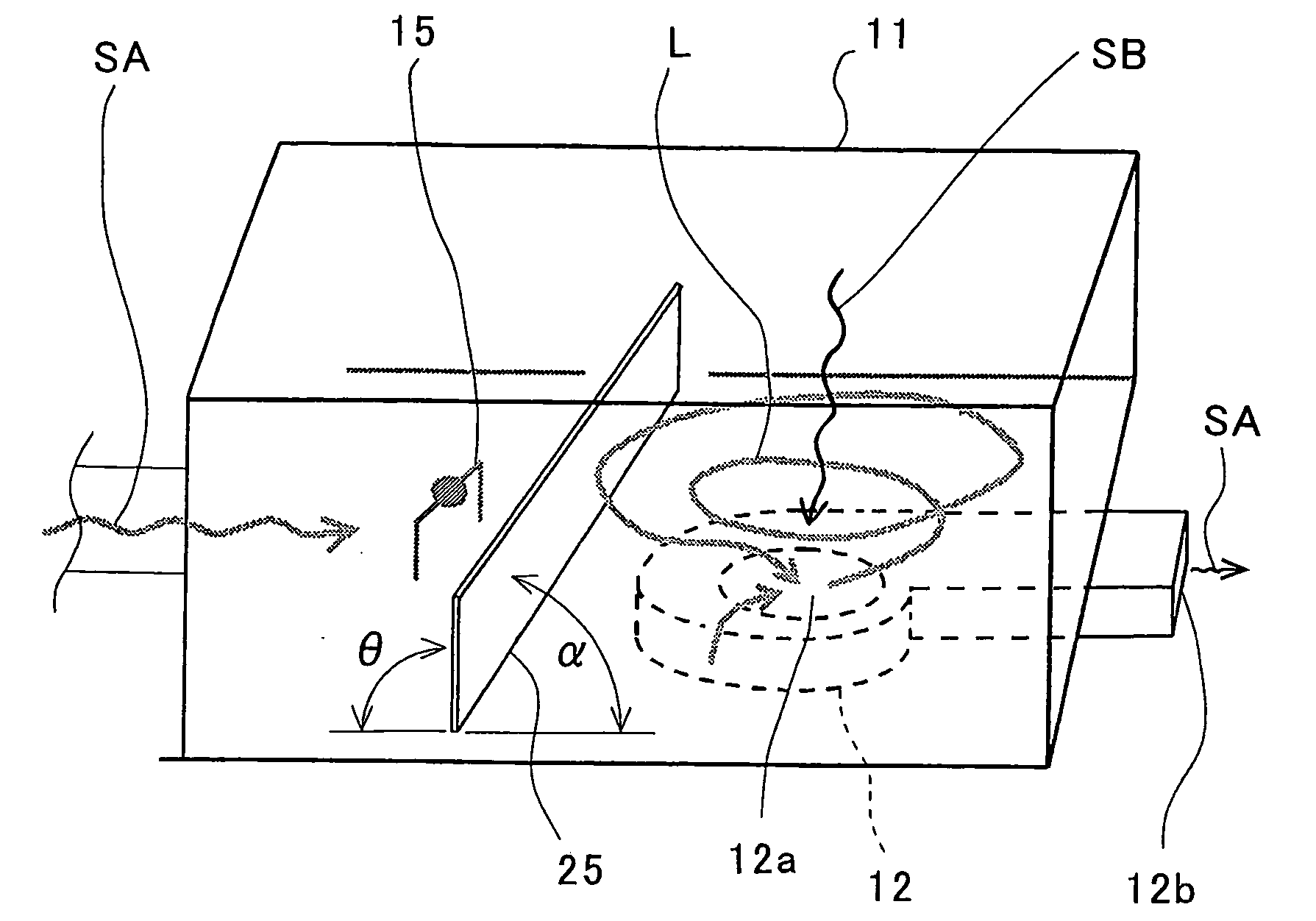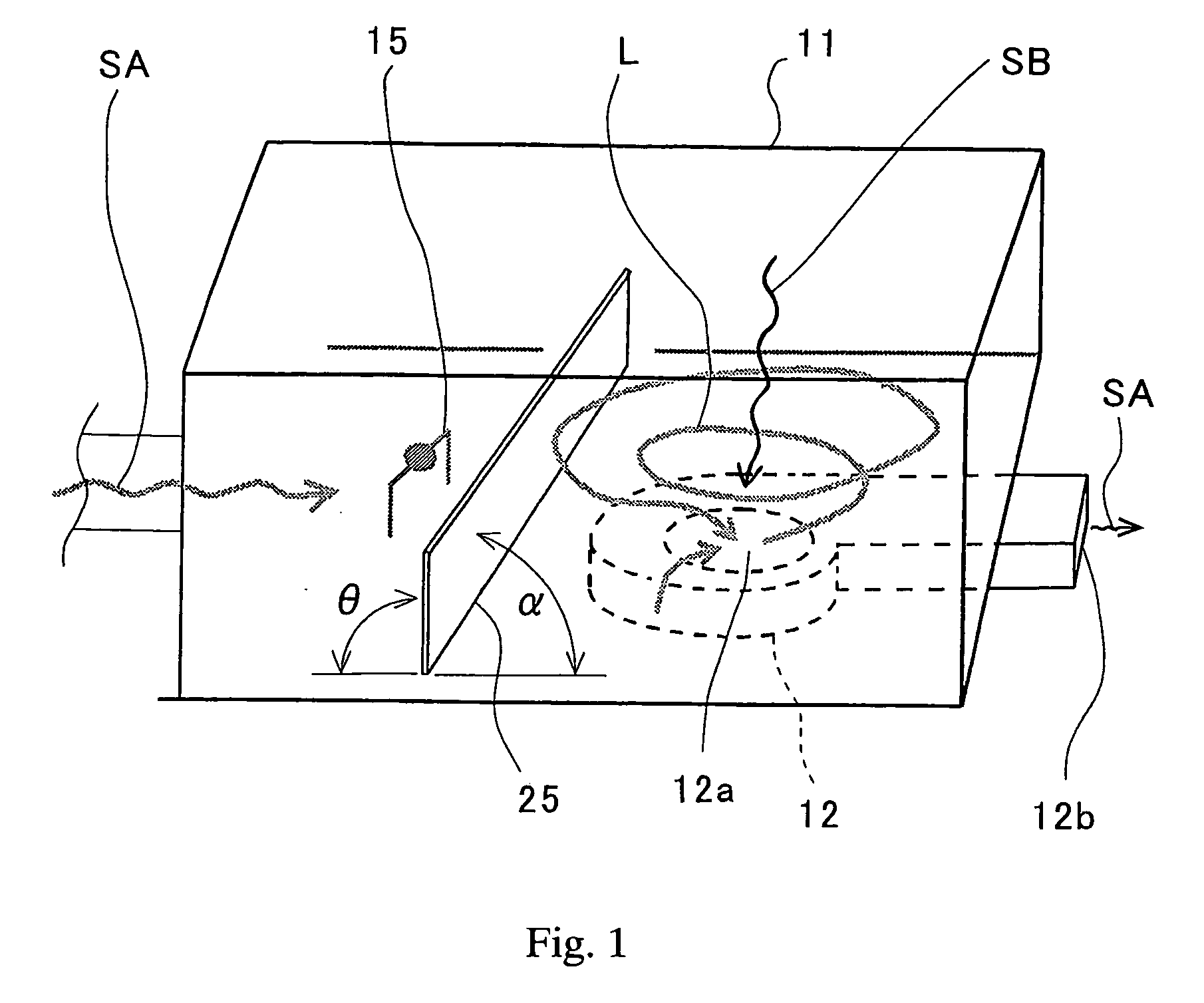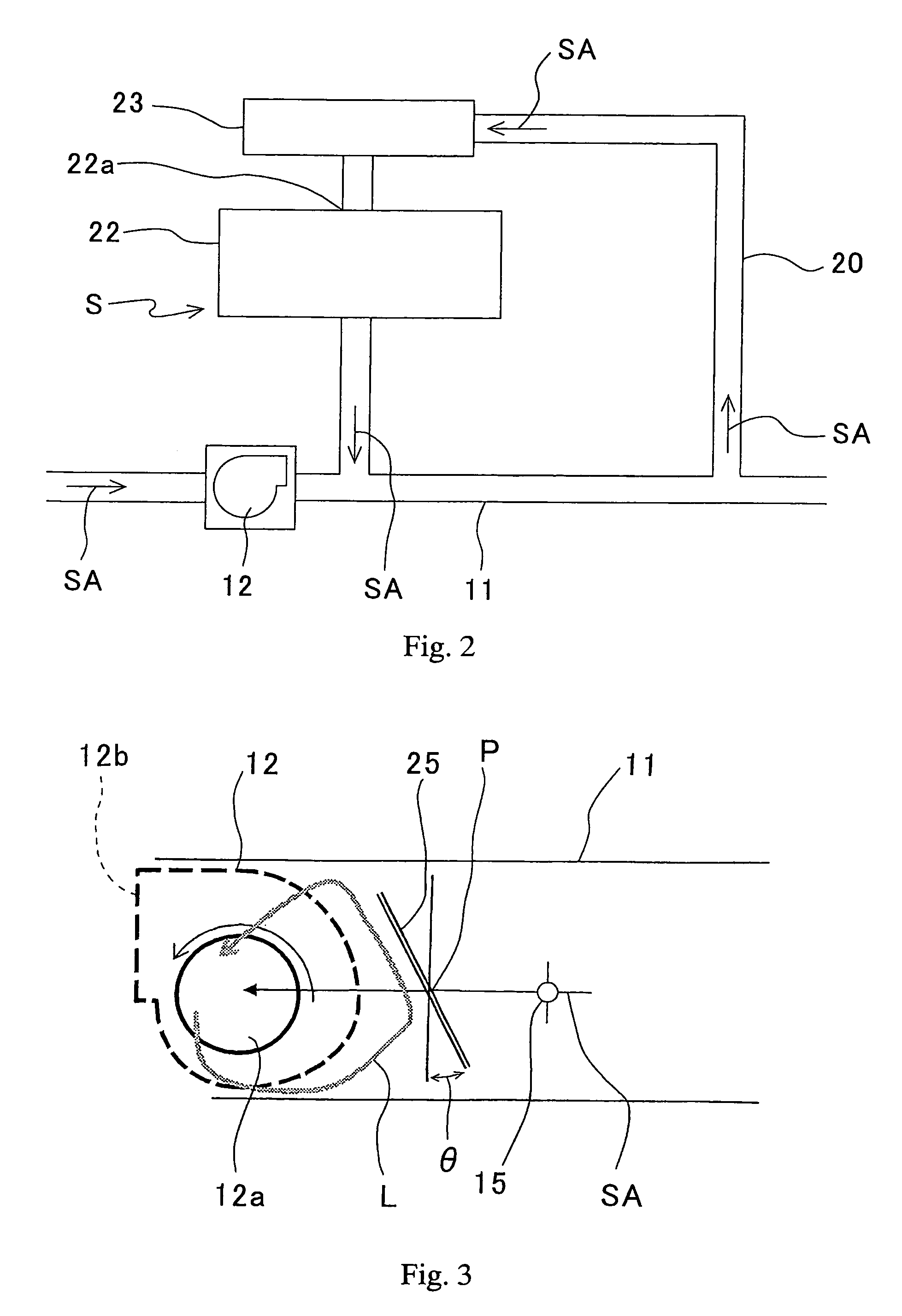Smoke detector
a detector and smoke technology, applied in the field of smoke detectors, can solve the problems of clogging the filter with dust, taking a lot of time and expense to conduct maintenance work on the filter, etc., and achieve the effect of stably merging and increasing the flow rate of the branch par
- Summary
- Abstract
- Description
- Claims
- Application Information
AI Technical Summary
Benefits of technology
Problems solved by technology
Method used
Image
Examples
first embodiment
[0039]the present invention is described with reference to FIGS. 1 and 2.
[0040]A smoke detector S includes a smoke detection part 22 connected to a sampling pipe 11 through a pipe 20, a filter 23 disposed at an inflow port 22a side of the smoke detection part 22, a fan (blower fan) 12 that sucks sampling air SA into the sampling pipe 11, and an air velocity sensor (flow sensor) 15 that measures an air velocity of the sampling air SA within the sampling pipe 11.
[0041]The smoke detection part 22 is provided with a light receiving element (smoke sensor) (not shown) such as a light emitting element and a photodiode, a light trap (not shown), a condenser lens (not shown), an aperture (not shown), and so on.
[0042]Within an inflow part 40 having a substantially box shape, and an intake port (not shown) for the sampling air arranged at a side surface thereof and a suction port 12a of the fan 12 arranged at a bottom surface thereof, an airflow direction of the sampling air SA at a primary si...
second embodiment
[0049]the present invention is described with reference to FIG. 3, and the same reference symbols of those of FIGS. 1 and 2 are also identical in the name and function.
[0050]A difference between the second embodiment and the first embodiment resides in that the straightening vane 25 is rotatably supported on the bottom surface or the ceiling surface of the inflow part 40 by a support shaft p. With the above-mentioned configuration, the straightening vane 25 can be set to the angle θ having the most shielding effect with respect to the reverse flow L according to the rotation speed of the fan 12 or the output of the air velocity sensor 15, and hence smoke detection with high precision can be executed even when the air velocity frequently varies.
third embodiment
[0051]A third embodiment according to the second invention is described with reference to FIGS. 5 and 6.
[0052]As illustrated in FIG. 5, a smoke detector 101 includes a smoke detection unit 102 having a dark box 121, a fan 103 that feeds air (sampling air) SA to be detected to the smoke detection unit 102, a pipe 104 serving as an air passage, a light emitting element 111 disposed within the smoke detection unit 102, a light receiving element 112 such as a photodiode, an air flow sensor 113 that measures the flow rate of the air and the fan 103, a power supply part 114 that supplies a power to the air flow sensor 113, and a fire determination part 115 connected to the light receiving element 112.
[0053]A smoke detection part 125 is disposed in the center of the dark box 121 of the smoke detection unit 102, and the sampling air SA that has passed through the pipe 104 and filtered by the filter 105 is introduced into the smoke detection part 125. Reference numeral 123 denotes a light tr...
PUM
 Login to View More
Login to View More Abstract
Description
Claims
Application Information
 Login to View More
Login to View More - R&D
- Intellectual Property
- Life Sciences
- Materials
- Tech Scout
- Unparalleled Data Quality
- Higher Quality Content
- 60% Fewer Hallucinations
Browse by: Latest US Patents, China's latest patents, Technical Efficacy Thesaurus, Application Domain, Technology Topic, Popular Technical Reports.
© 2025 PatSnap. All rights reserved.Legal|Privacy policy|Modern Slavery Act Transparency Statement|Sitemap|About US| Contact US: help@patsnap.com



